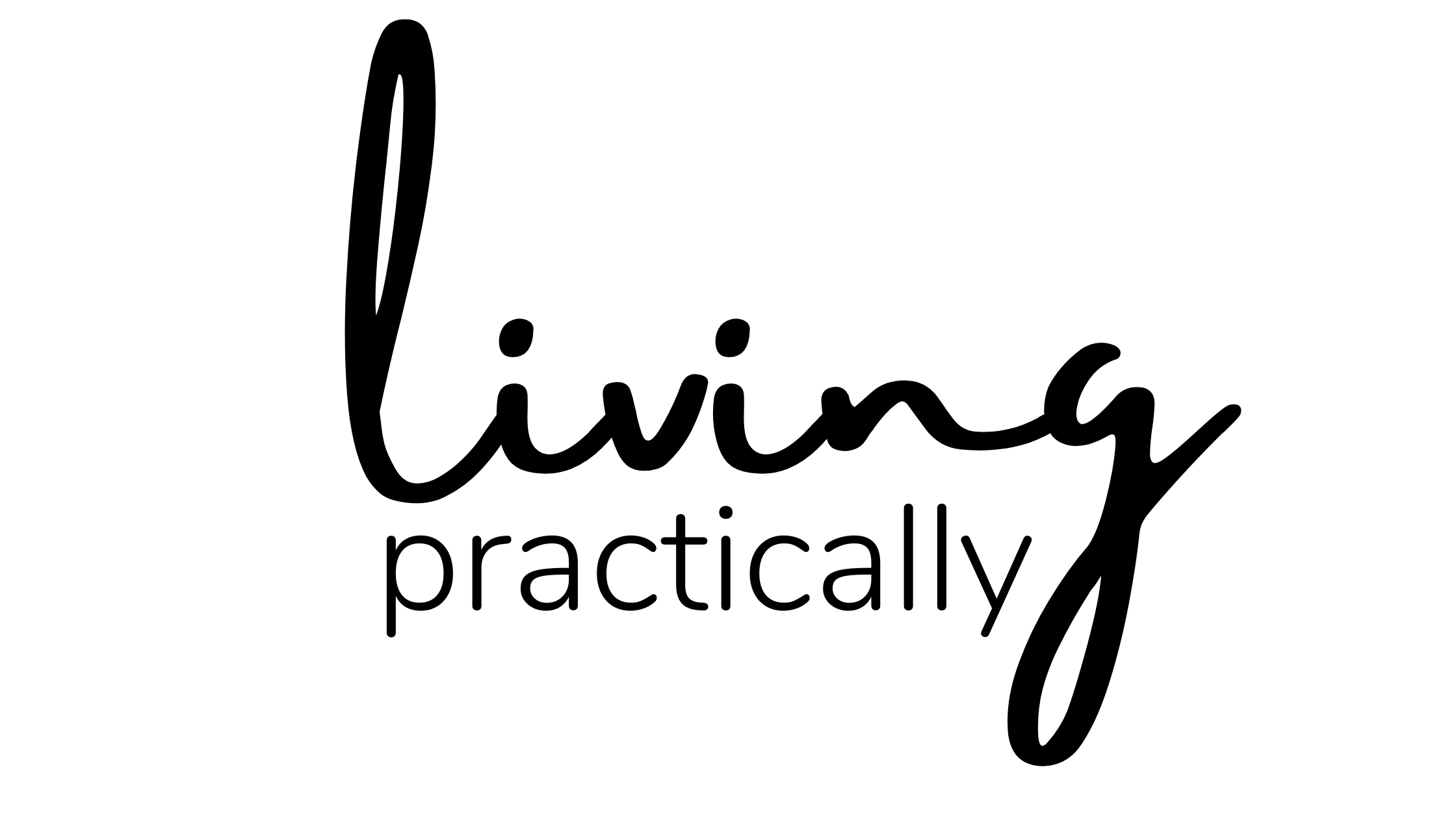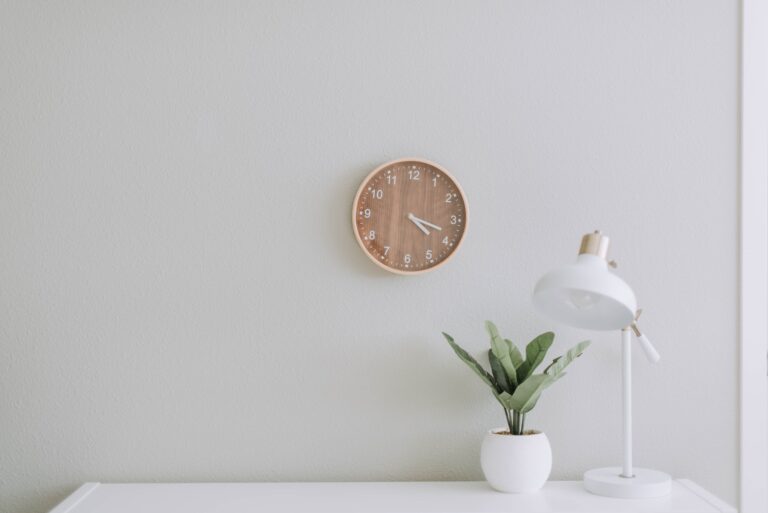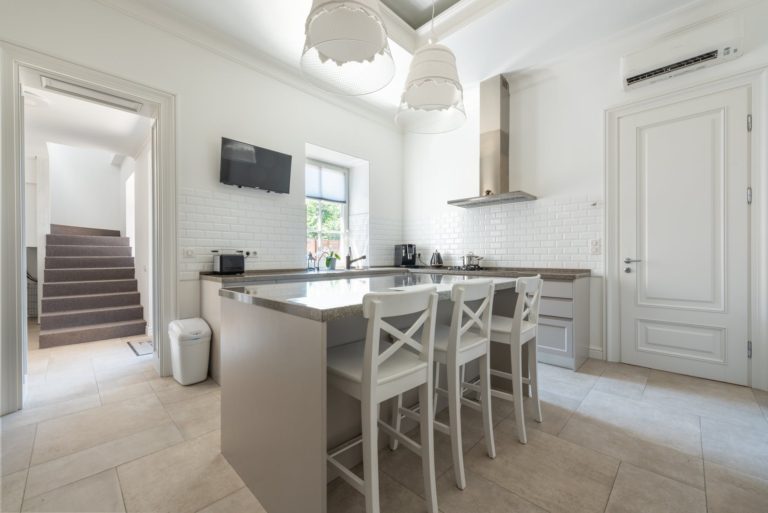Ditch the Toxins: Easy DIY Cleaning Products for a Cleaner, Greener Home
As a mom, you want the best for your family and a clean home is essential for everyone’s well-being. However, with so many cleaning products on the market, it can be difficult to know which ones are safe and which ones contain harmful chemicals. While we can’t control everything or eliminate every toxin, we can take small steps to reduce our exposure to harmful chemicals. One way to do this is by making your own DIY cleaning products.
Not only are they safer and more natural, but they are also cost-effective and easy to make. In this post, we’ll explore the benefits of using DIY cleaning products and share some simple and effective recipes that you can make at home.
Why Use DIY Cleaning Products
As a mom, you want to ensure that your family’s health is protected, and that starts with creating a clean and safe environment in your home. However, using traditional cleaning products can come with hidden dangers that you may not be aware of. Luckily, there’s an easy solution: making your own DIY cleaning products. In this section, we’ll explore the benefits of using DIY cleaning products and why they are a better option for your health, wallet, and the environment.
Benefits of Using DIY Cleaning Products
There are just so many benefits to ditching supermarket brands that are riddled with chemicals. Generally, if you can’t pronounce it, try to avoid spraying it all over your home. You can’t eliminate every single toxin, but you can start with a few easy steps that will help you in the right direction.
- Environmentally friendly
Traditional cleaning products often contain chemicals that can harm the environment and pollute the air and water. DIY cleaning products typically use natural ingredients that are biodegradable, which reduces the number of chemicals that end up in the environment. This is not only good for the planet but also for the health of your family and can be an easier (and cheaper) swap towards a more sustainable and low toxin home.
- Cost-effective
Buying cleaning products from the store can add up quickly and become expensive. DIY cleaning products are usually much cheaper than store-bought products, which can save you money in the long run. With just a few simple ingredients, you can make multiple cleaning products that can be used for different tasks. This means you can create your own cleaning solutions that work just as well, if not better, than expensive store-bought products.
- Safe for your health
DIY cleaning products are often made from natural ingredients that are safer for you and your family. Some cleaning products can contain harmful chemicals that can cause skin irritation, respiratory problems, and other health issues. By using natural ingredients, you can avoid these risks and create a safer environment for your family – and you can rest assured knowing exactly what is in your cleaning products.
DIY Cleaning Products Recipes
We’ll provide you with some easy-to-make and effective DIY cleaning product recipes that can be used to clean various areas of your home, such as an all-purpose cleaner, glass cleaner, floor cleaner, bathroom cleaner, and furniture polish. These cleaning products are made with simple and natural ingredients that you may already have in your pantry, making them a cost-effective alternative to store-bought cleaners.
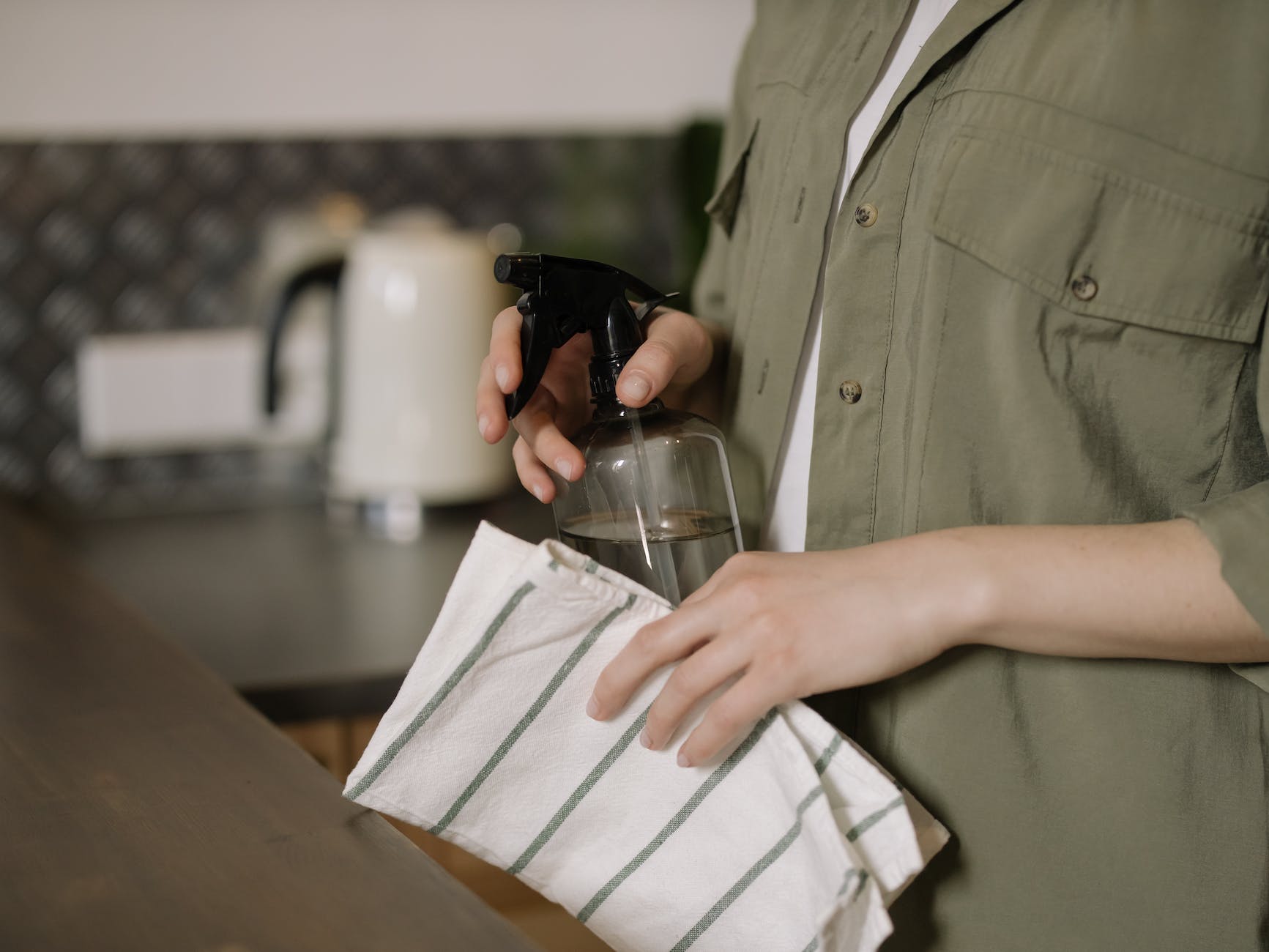
DIY All Purpose Cleaner
An all-purpose cleaner is a versatile cleaning product that can be used on a variety of surfaces, including countertops, floors, and appliances. It’s an essential cleaning product in any household, and making your own is a great way to save money and reduce your environmental impact.
Ingredients:
- 1/2 cup white vinegar
- 2 cups water
- 10-15 drops of your favorite essential oil (optional)
Instructions:
- Mix the white vinegar and water in a spray bottle.
- Add 10-15 drops of your favorite essential oil (optional) to give the cleaner a pleasant scent and boost its cleaning power.
- Shake the bottle to mix the ingredients well.
To use the all-purpose cleaner, simply spray it onto the surface you want to clean and wipe it down with a clean cloth or sponge. This cleaner is safe to use on most surfaces, but avoid using it on natural stone surfaces like marble or granite, as the acidity in the vinegar can damage the surface over time.
Tip: For tough stains or heavily soiled areas, let the cleaner sit for a few minutes before wiping it down. You can also add a tablespoon of baking soda to the mix to boost its cleaning power.
Important: If you have pets, please ensure the essential oils you are using are pet safe.
DIY Glass Cleaner
Cleaning those tiny fingerprints from glass surfaces can be a frustrating task especially when you’re left with streaks and smudges. But fear not, because making your own glass cleaner is not only easy, but also effective in producing a sparkling, streak-free finish.
List of ingredients:
- 1 cup rubbing alcohol
- 1 cup water
- 1 tablespoon white vinegar
Step-by-step instructions:
- In a spray bottle, mix together 1 cup of rubbing alcohol and 1 cup of water.
- Add 1 tablespoon of white vinegar to the mixture and shake well.
- Your DIY glass cleaner is now ready to use. Simply spray the solution onto the glass surface you want to clean and wipe with a microfiber cloth.
Tips on how to use the cleaner effectively:
- Avoid cleaning windows on a sunny day or when the glass is hot, as this can cause streaking. Choose a cloudy day or wait until the glass is cool to the touch.
- Use a microfiber cloth to wipe the glass surface. This will help to prevent streaking and leave the surface sparkling clean.
- For tough stains or grime, let the cleaner sit on the surface for a few minutes before wiping it off with a cloth.
- When cleaning large glass surfaces, like shower doors or mirrors, start at the top and work your way down. This will help to prevent drips and streaks from forming.
Making your own glass cleaner is not only cost-effective, but also an eco-friendly way to keep your glass surfaces clean and sparkling. With just a few simple ingredients, you can create a cleaner that is effective and safe for your family. Give this DIY glass cleaner a try and see the difference it can make in your home.
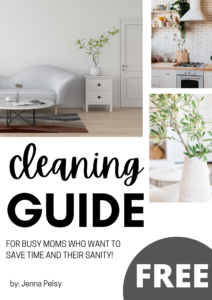
Grab Your FREE Cleaning Guide!
As busy moms, we feel like we can never catch up from all of the items on our to-do list. Snag this free guide where I share all of my secrets for keeping a company ready house!
DIY Floor Cleaner
As a mom, keeping the floors clean is an ongoing task that can feel daunting, especially with young children in the house. Making your own floor cleaner can help ease the burden of cleaning while providing a safer environment for your family.
Ingredients:
- 2 cups distilled water
- 1/2 cup white vinegar
- 10-15 drops of your favorite essential oil (optional)
Instructions:
- Combine the distilled water and white vinegar in a bucket.
- Add 10-15 drops of your favorite essential oil (optional) to give the cleaner a pleasant scent and boost its cleaning power
This recipe is made with simple and natural ingredients, such as distilled water and white vinegar, which are safe to use around children and pets. Adding a few drops of your favorite essential oil can make cleaning more enjoyable by giving your home a fresh and clean scent.
To use this floor cleaner, simply dip a mop or cloth into the mixture and wring it out well. Then, mop or wipe the floors as you normally would. Avoid using this cleaner on unsealed wood floors, as the water can damage the wood.
Tip: For stubborn stains or heavily soiled areas, you can add a tablespoon of baking soda to the mixture. The baking soda will help break down tough stains and leave your floors looking sparkling clean.
DIY Bathroom Cleaner
This recipe is made with natural ingredients that are both safe and effective. Baking soda is a natural deodorizer and abrasive that helps to remove dirt and grime, while liquid castile soap and vinegar are excellent natural cleaners.
Ingredients:
- 1/2 cup baking soda
- 1/4 cup liquid castile soap
- 1/4 cup white vinegar
- 10 drops of your favorite essential oil (optional)
- 2 cups hot water
Instructions:
- Mix the baking soda and liquid castile soap in a bowl until it forms a paste.
- Add the white vinegar and essential oil to the mixture and stir well.
- Slowly pour in the hot water and stir until the ingredients are well combined.
- Pour the mixture into a spray bottle for easy application.
To use this bathroom cleaner, simply spray it onto the surface you want to clean, such as the sink, bathtub, or toilet. Let it sit for a few minutes to loosen dirt and grime, then scrub with a brush or sponge and rinse with water. This cleaner is safe to use on most bathroom surfaces, but avoid using it on natural stone surfaces like marble or granite, as the acidity in the vinegar can damage the surface over time.
Tip: For tough stains or heavily soiled areas, you can let the cleaner sit for longer or add more baking soda to the mixture. You can also use a toothbrush to scrub hard-to-reach areas like grout or around faucets.
DIY Furniture Polish
Store-bought furniture polish can be expensive and contain harsh chemicals that can actually damage your furniture over time. Making your own furniture polish is not only cost-effective but also safer for little fingers and paws.
Ingredients:
- 1/4 cup olive oil
- 1/4 cup white vinegar
- 10-15 drops of your favorite essential oil (optional)
Instructions:
- Mix the olive oil and white vinegar in a small bowl.
- Add 10-15 drops of your favorite essential oil (optional) to give the polish a nicer scent and boost its cleaning power.
- Stir the mixture well.
To use this furniture polish, simply apply a small amount to a clean, dry cloth and rub it onto the surface of your furniture. Use a circular motion to distribute the polish evenly and make sure to cover the entire surface. Then, use a clean cloth to buff the surface and remove any excess polish.
Tip: This furniture polish is safe to use on most types of wood, including antique or unfinished wood. However, it’s always a good idea to test the polish on a small, inconspicuous area first to make sure it doesn’t damage or discolor the surface.

What Essential Oils Should I Use?
Choosing the right essential oil can make all the difference in your DIY cleaning products. Essential oils not only provide a pleasant scent but can also boost the cleaning power of your products. With so many different essential oils to choose from, it can be overwhelming to decide which one to use for your cleaning needs. In this section, we’ll explore some of the most popular essential oils and their uses in cleaning, to help you make an informed decision and create effective and fragrant cleaning products for your home.
- Lemon: Cuts through grease and grime, freshens and deodorizes.
- Tea Tree: Natural disinfectant, helps to kill bacteria and viruses.
- Lavender: Calming scent, helps to remove unpleasant odors.
- Peppermint: Natural insect repellent, leaves a fresh and minty scent.
- Eucalyptus: Helps to remove stains and grease, has a fresh and clean scent.
- Rosemary: Natural disinfectant, helps to remove odors and stains.
- Thyme: Natural disinfectant, helps to kill bacteria and viruses, removes grease and grime.
- Orange: Cuts through grease, freshens and deodorizes, uplifts mood with its citrus scent.
Note: Always be sure to do your research and use caution when using essential oils, as they can be strong and may cause irritation if not used properly. It’s always a good idea to test a small area first and dilute the oil if needed.
As a mom, I understand how important it is to keep our homes clean and safe for our families. By making your own cleaning products, you can have peace of mind knowing exactly what ingredients are being used and avoid exposing your loved ones to harmful toxins.
“If it can’t be reduced, reused, repaired, rebuilt, refurbished, refinished, resold, recycled, or composted, then it should be restricted, designed or removed from production.”
Pete Seeger
So why not give DIY cleaning products a try? Not only will you be doing your part for the environment, but you’ll also be taking a step towards a healthier and safer home for you and your family.

About the Author
Hi! I’m Taiba, a mama of two little boys and founder of Mindful Motherhood Co, a space where we help mothers live a mindful and intentional life. We talk about maternal mental health, wellness and home life.
Come and visit us!
